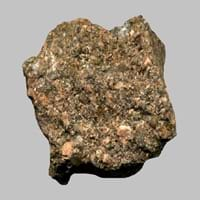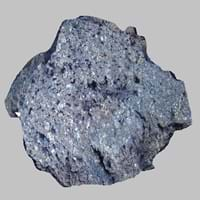Arkose and Mugearite
Definition
Definition
Arkose is a sedimentary rock, specifically a type of sandstone containing at least 25% feldspar
Mugearite is a type of oligoclase bearing basalt, also comprising of olivine, apatite, and opaque oxides
History
Origin
France
Skye, Scotland
Discoverer
Alexandre Brongniart
Alfred Harker
Etymology
From Auvergne region of France used by a French geologist Alexandre Brongniart in 1826 who applied this term to some feldspathic sandstones
From mugear + -ite
Class
Sedimentary Rocks
Igneous Rocks
Sub-Class
Durable Rock, Hard Rock
Durable Rock, Medium Hardness Rock
Family
Group
Not Applicable
Volcanic
Other Categories
Coarse Grained Rock, Opaque Rock
Opaque Rock
Texture
Texture
Clastic
Glassy, Massive, Porphyritic, Scoriaceous, Vesicular
Color
Reddish Brown
Black, Brown, Light to Dark Grey
Maintenance
Less
Less
Durability
Durable
Durable
Water Resistant
Yes
Yes
Scratch Resistant
Yes
Yes
Stain Resistant
Yes
Yes
Wind Resistant
No
No
Acid Resistant
Yes
No
Appearance
Rough and Dull
Dull and Soft
Uses
Architecture
Interior Uses
Decorative Aggregates, Homes, Interior Decoration
Floor Tiles, Flooring, Homes, Hotels
Exterior Uses
Paving Stone, Office Buildings
As Building Stone, Garden Decoration
Other Architectural Uses
Whetstones
Curbing
Industry
Construction Industry
Cement Manufacture, Construction Aggregate, for Road Aggregate, Production of Glass and Ceramics, Raw material for the manufacture of mortar
As Dimension Stone, Cobblestones, Rail Track Ballast, Roadstone
Medical Industry
Not Yet Used
Not Yet Used
Antiquity Uses
Artifacts, Sculpture, Small Figurines
Artifacts, Monuments, Sculpture
Other Uses
Commercial Uses
In aquifers, Soil Conditioner, Source of Magnesia (MgO), Tombstones
Creating Artwork
Types
Types
Not Available
Alkaline Basalt, Boninite, High Alumina Basalt, Mid Ocean Ridge Basalt (MORB), Tholeiitic Basalt, Basaltic trachyandesite, Mugearite and Shoshonite
Features
Available in Lots of Colors and Patterns, Generally rough to touch, Is one of the oldest rock
Has High structural resistance against erosion and climate, Very fine grained rock
Archaeological Significance
Monuments
Not Yet Used
Used
Famous Monuments
Not Applicable
Data Not Available
Sculpture
Used
Used
Famous Sculptures
Data Not Available
Data Not Available
Pictographs
Not Used
Used
Petroglyphs
Not Used
Used
Figurines
Used
Used
Fossils
Present
Absent
Formation
Formation
Arkose rock forms from the weathering of feldspar-rich igneous or metamorphic rock, most commonly granitic rocks, which are primarily composed of quartz and feldspar.
Mugearite forms when lava reaches the Earth's surface near an active volcano. The temperature of lava is between 1100 to 1250° C when it gets to the surface.
Composition
Mineral Content
Calcite, Clay, Clay Minerals, Feldspar, Micas, Quartz
Olivine, Plagioclase, Pyroxene
Compound Content
Aluminium Oxide, CaO, Iron(III) Oxide, Potassium Oxide, MgO, Sodium Oxide, Silicon Dioxide
Aluminium Oxide, CaO, Iron(III) Oxide, FeO, Potassium Oxide, MgO, MnO, Sodium Oxide, Phosphorus Pentoxide, Silicon Dioxide, Titanium Dioxide
Transformation
Metamorphism
No
Yes
Types of Metamorphism
Not Applicable
Burial Metamorphism, Impact Metamorphism
Weathering
Yes
Yes
Types of Weathering
Biological Weathering, Chemical Weathering, Mechanical Weathering
Biological Weathering, Chemical Weathering
Erosion
Yes
No
Types of Erosion
Coastal Erosion, Glacier Erosion, Water Erosion, Wind Erosion
Not Applicable
Properties
Physical Properties
Hardness
6-7
6
Grain Size
Coarse Grained
Not Applicable
Fracture
Conchoidal
Conchoidal
Streak
White
White to Grey
Porosity
Highly Porous
Less Porous
Luster
Dull
Not Available
Compressive Strength
Not Available
37.50 N/mm2
27
Cleavage
Not Available
Not Applicable
Toughness
Not Available
2.3
Specific Gravity
0
2.8-3
Transparency
Opaque
Opaque
Density
Not Available
2.9-3.1 g/cm3
Thermal Properties
Specific Heat Capacity
Not Available
0.84 kJ/Kg K
15
Resistance
Heat Resistant, Impact Resistant, Pressure Resistant
Heat Resistant, Pressure Resistant, Wear Resistant
Reserves
Deposits in Eastern Continents
Asia
China, India, Kazakhstan, Mongolia, Russia, Uzbekistan
India, Russia
Africa
Namibia, Nigeria, South Africa
South Africa
Europe
Austria, Denmark, Germany, Great Britain, Netherlands, Norway, Poland, Sweden, Switzerland, United Kingdom
Iceland
Others
Greenland
Not Yet Found
Deposits in Western Continents
North America
Canada, USA
Canada, USA
South America
Brazil
Brazil
Deposits in Oceania Continent
Australia
New South Wales, New Zealand
Not Yet Found
All about Arkose and Mugearite Properties
Know all about Arkose and Mugearite properties here. All properties of rocks are important as they define the type of rock and its application. Arkose belongs to Sedimentary Rocks while Mugearite belongs to Igneous Rocks.Texture of Arkose is Clastic whereas that of Mugearite is Glassy, Massive, Porphyritic, Scoriaceous, Vesicular. Arkose appears Rough and Dull and Mugearite appears Dull and Soft. The luster of Arkose is dull while that of Mugearite is not available. Arkose is available in reddish brown colors whereas Mugearite is available in black, brown, light to dark grey colors. The commercial uses of Arkose are in aquifers, soil conditioner, source of magnesia (mgo), tombstones and that of Mugearite are creating artwork.
|
||
|
||
|










